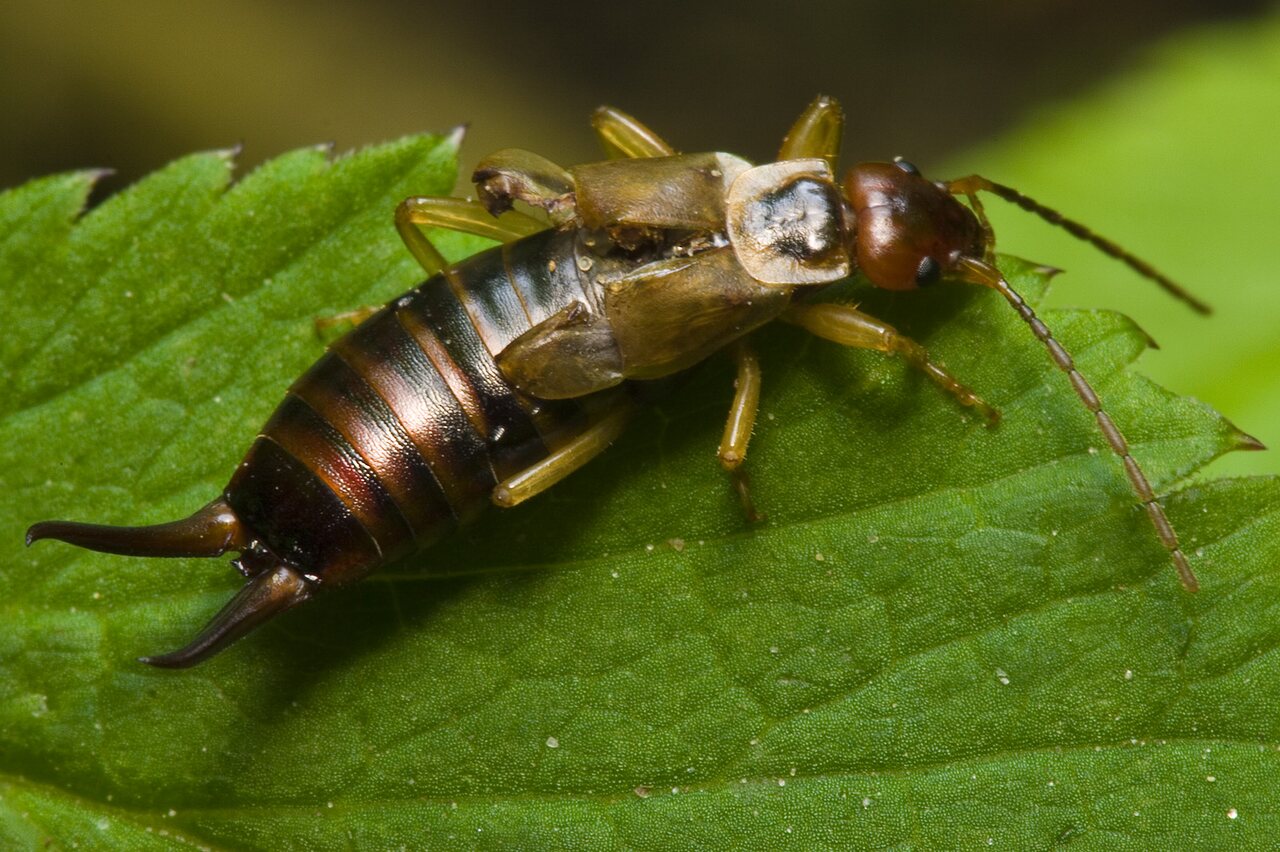
Forficula auricularia female · paprastoji auslinda ♀
- common earwig, European earwig
- Gemeine Ohrwurm
- paprastoji auslinda
- parastā spīļaste
- skorek pospolity
https://en.wikipedia.org/wiki/Forficula_auricularia Originating from Europe, western Asia and possibly North Africa, Forficula auricularia was introduced to North America, New Zealand. European earwigs spend the daytime in cool, dark, inaccessible places such as flowers, fruits, and wood crevices. They are primarily active at night, seeking out food ranging from plant matter to small insects. Though they are omnivorous, they are considered as scavengers rather than predators. Often they consume plant matter, though they have also been known to feed on aphids, spiders, insect eggs, and dead plants and insects, among other things. Although Forficula auricularia have well-developed wings, they are fairly weak and are rarely, if ever, used.
Common earwigs exhibit varying levels of maternal care. Female earwigs typically show maternal care through behaviors such as guarding and tending to their eggs and nymphs. The female cares for her young by shifting the eggs about and continuously cleaning them with her mouth and forceps to avoid fungal growth and pathogens through careful extraction of fungal spores from the eggs. She protects the eggs by staying close to the nest, fiercely defending against predators, applying chemical protection against desiccation through egg grooming, and relocating the entire clutch under stressful conditions. Their protection of the eggs involves remaining close to the nest and defending against potential predators.
In the spring, she spreads them out into a single layer and the young emerge from the eggs. After the eggs hatch in the spring, the mother continues to care for the nymphs, providing protection, grooming, food, and sometimes even regulating the temperature in the nest. The mother provides food from the larval stage to the first instar (term for a developmental stage in insects) and will continue to defend the aggregated family group in the burrow and on nocturnal foraging excursions. She guards them until they reach maturity after about one month. It is possible for the female to lay a second brood in one season and by the end of August all of the young reach maturity.
Rudos spalvos vabzdys, kiek suplotas, su gana ilgais siūliškais ūsais, nedidelėmis akimis, rausvo atspalvio galva. Auslindos turi dvi poras sparnų, bet pirmoji pora virto trumpais kietais antsparniais, po kuriais slepiasi susilankstanti antroji skraidomųjų sparnų pora. Auslindos gali skraidyti, bet dieną jos lindi įvairiuose plyšiuose. Maitinasi naktį. Ėda viską, kas pakliūva: grybelius, dumblius, pūvančias ir minkštesnes augalų dalis, nevengia ir vabzdžių. Padėtus kiaušinėlius žemėje iki 10 cm gylio išraustame urvelyje patelė saugo per žiemą.
‥
0 comments
Add a comment